Monadnock State Park
- January 29, 2024
- 0 comment
Explore Monadnock State Park’s stunning landscapes, diverse wildlife, and hiking trails. A perfect retreat for nature enthusiasts and families. Located in the heart of New Hampshire, Monadnock State Park is a haven for those seeking a blend of serene natural beauty and outdoor adventure. Renowned for its iconic Mount Monadnock, the park attracts over 100,000 hikers annually, making it one of the most popular destinations in the region.
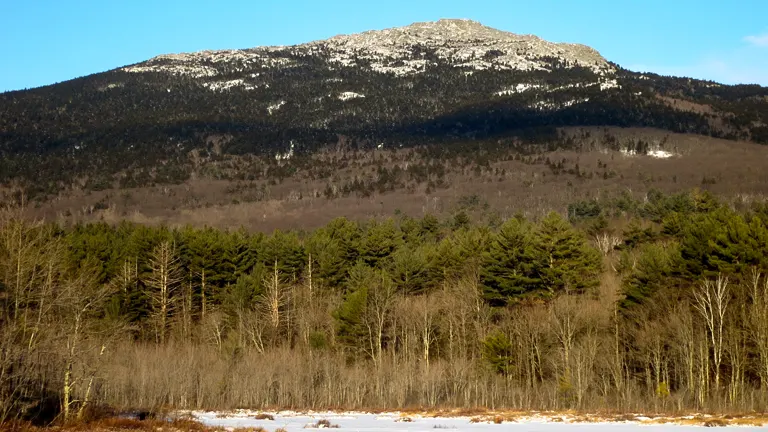
Its diverse ecosystem, spanning across 1,017 acres, offers a rich tapestry of flora and fauna, providing a picturesque backdrop for a wide array of recreational activities. Whether you’re an experienced hiker aiming to conquer the mountain’s summit or a family looking for a peaceful escape amidst nature, Monadnock State Park promises an unforgettable experience.
Characterizing Features of Monadnock State Park
- Iconic Mount Monadnock: This solitary peak, standing at 3,165 feet, is a symbol of the region’s natural grandeur. Renowned for its bare, isolated summit, Mount Monadnock offers 360-degree panoramic views, drawing hikers from around the globe. The mountain’s geological makeup, primarily consisting of quartz and feldspar, contributes to its unique weathered appearance. This geographic landmark is not only a popular hiking destination but also a subject of local folklore and artistic inspiration.
- Extensive Trail System: Monadnock State Park boasts over 40 miles of meticulously maintained trails, catering to a range of hiking abilities. From the challenging White Dot Trail, known for its steep ascent to the summit, to the gentler Cliff Walk Trail with its scenic vistas, the park’s trails offer diverse hiking experiences. These pathways meander through lush forests, over rocky outcrops, and past tranquil streams, showcasing the park’s varied terrain.
- Rich Biodiversity: The park’s diverse habitats, ranging from dense woodlands to alpine scrub, support a wide array of flora and fauna. This biodiversity hotspot is home to several rare and endangered species. Plants like the mountain cranberry and animals such as the peregrine falcon find refuge in this protected area. The park’s changing altitudes create distinct ecological zones, each hosting unique species adapted to their specific environments.
- Historical Significance: Monadnock State Park is steeped in cultural and historical importance. Native American tribes originally used the area for hunting and spiritual purposes. The name “Monadnock” itself is derived from the Abenaki language. In the 19th and early 20th centuries, the mountain inspired poets, artists, and philosophers, including Ralph Waldo Emerson and Henry David Thoreau, who celebrated its beauty and solitude in their works. The park’s history is a tapestry of natural wonder intertwined with human interaction and reverence.
- Environmental Education Opportunities: The park is not just a recreational area but also an educational resource. Through various programs, interpretive signs, and guided walks, visitors can learn about the park’s ecology, geology, and conservation efforts. These educational initiatives aim to foster a deeper understanding and appreciation of the natural world, encouraging sustainable practices and environmental stewardship among park visitors.
History of Monadnock State Park
Monadnock State Park, established in the early 20th century, carries a rich tapestry of historical significance, deeply intertwined with the cultural and natural heritage of New Hampshire. The park’s centerpiece, Mount Monadnock, has been a prominent landmark for centuries, its name deriving from the Native American Algonquian language, meaning “mountain that stands alone.” This iconic mountain, with its unmistakable profile, has been a guiding beacon and a sacred site for various Native American tribes, notably the Abenaki and the Pennacook. The area around Mount Monadnock was utilized for hunting and as a spiritual retreat, indicating its importance long before it became a state park.
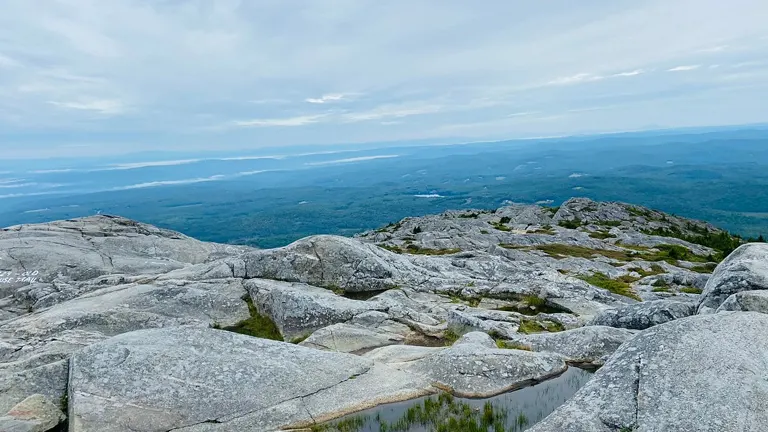
In the 19th century, Mount Monadnock began to capture the attention of artists, writers, and philosophers, significantly influencing the American transcendentalist movement. Figures like Ralph Waldo Emerson and Henry David Thoreau were drawn to its solitary beauty, and their writings contributed to the mountain’s fame. This cultural significance played a pivotal role in the early conservation efforts, leading to the establishment of Monadnock State Park. In the early 1900s, efforts to preserve the mountain and its surroundings gained momentum, resulting in the acquisition of land and the official formation of the state park. Since then, the park has been a testament to conservation and public enjoyment, balancing the preservation of its pristine natural environment with its role as a recreational and inspirational haven for visitors from around the world.
Unique Ecosystem of Monadnock State Park
The ecosystem of Monadnock State Park is a unique and complex tapestry of biodiversity, showcasing a remarkable interplay of various habitats and species. Dominated by the imposing Mount Monadnock, the park’s environment transitions from dense hardwood forests at lower elevations to sparse alpine vegetation at higher altitudes. This gradient creates a range of ecological niches, each hosting distinct flora and fauna. The lower forested areas are rich with species such as sugar maples, American beech, and yellow birch, providing a habitat for wildlife like white-tailed deer, red foxes, and various bird species.

As one ascends, the vegetation shifts to hardier species like mountain laurel and blueberry bushes, with rarer alpine plants near the summit. These higher elevations also serve as critical habitats for species such as the peregrine falcon and other birds of prey. This diversity, coupled with the park’s emphasis on conservation and environmental education, makes Monadnock State Park a crucial sanctuary for studying and experiencing New Hampshire’s natural heritage.
Location of Monadnock State Park
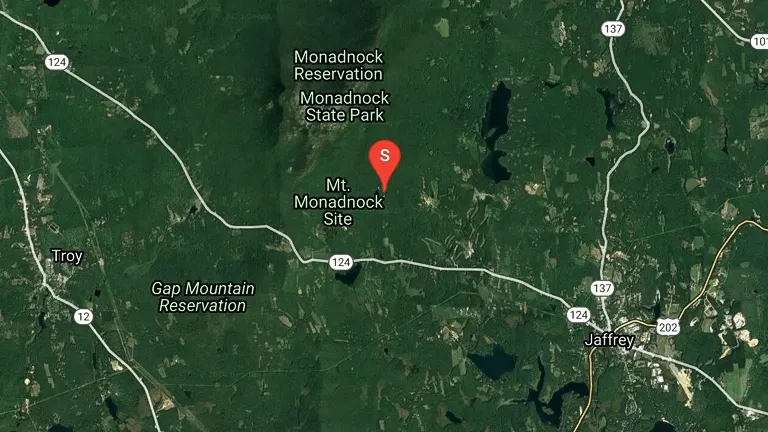
Monadnock State Park is strategically situated in the southwestern part of New Hampshire, near the town of Jaffrey, making it a highly accessible natural retreat. Located approximately 38 miles southwest of Concord, New Hampshire’s capital, and around 90 miles northwest of Boston, Massachusetts, the park serves as a convenient escape into nature for both local residents and visitors from larger urban areas.
Here’s a list of guides on how to reach Indiana Dunes State Park:
1. By Car (From Concord, NH):
- Take NH Route 89 South to NH Route 202 West.
- Follow NH Route 202 West to NH Route 124 West.
- Continue on NH Route 124 West; the park entrance is clearly signposted.
2. By Car (From Boston, MA):
- Take I-93 North to I-95 South.
- Follow I-95 South to NH Route 101 West.
- Continue on NH Route 101 West to NH Route 124 West to the park.
3. Public Transportation (From Boston, MA):
- Take a bus or train to Nashua, NH.
- From Nashua, rent a car or take a local bus service that travels closer to Jaffrey, NH.
- Complete the journey with a taxi or ride-share service to Monadnock State Park.
4. From Manchester-Boston Regional Airport (MHT):
- Rent a car at the airport.
- Take I-293 South to NH Route 101 West.
- Follow NH Route 101 West to NH Route 124 West, leading directly to the park.
5. From Logan International Airport (BOS):
- Rent a car or take a shuttle service to South Station in Boston.
- From South Station, take a bus or train to Nashua, NH, then follow the above directions from Nashua.
6. Cycling or Motorcycling Routes:
- For those who prefer biking, scenic routes along NH Route 101 and NH Route 124 offer a pleasant journey.
- Be prepared for varying terrain and ensure you have the necessary gear for a safe trip.
The Importance of Conservation and Recreation in Monadnock State Park

The dual focus on conservation and recreation in Monadnock State Park epitomizes the delicate balance between preserving natural habitats and facilitating human engagement with the environment. This commitment to conservation ensures the protection of the park’s unique biodiversity, geological formations, and pristine landscapes, safeguarding it for future generations. Initiatives like habitat restoration, wildlife protection, and sustainable trail maintenance are central to these efforts. Simultaneously, the park’s recreational offerings, including its extensive trail system, camping facilities, and educational programs, provide visitors with the opportunity to connect with nature, promoting environmental awareness and stewardship. This synergy of conservation and recreation at Monadnock State Park not only enhances visitor experiences but also plays a critical role in the broader narrative of ecological preservation and responsible outdoor recreation in New Hampshire.
Diverse Vegetation and Plant Species in Monadnock State Park
- Sugar Maple (Acer saccharum): This quintessential New England tree is renowned for its vibrant fall foliage, ranging from bright yellows to deep reds. Sugar maples are a staple in the park’s lower forested areas, contributing significantly to the autumnal color display.
- American Beech (Fagus grandifolia): Recognized by its smooth, gray bark and pointed buds, the American beech is a common sight in the park’s moist, lower elevation forests. In autumn, its leaves turn a golden bronze, adding to the park’s colorful landscape.
- Yellow Birch (Betula alleghaniensis): With its distinctive yellowish-bronze bark that peels in thin, papery layers, the yellow birch thrives in the cooler, damp areas of the park. It’s important for wildlife, providing habitat and food for various bird and mammal species.
- Mountain Laurel (Kalmia latifolia): Often found in the park’s higher and rocky areas, mountain laurel is celebrated for its beautiful pink and white blossoms in late spring. This evergreen shrub adds a splash of color to the landscape and is New Hampshire’s state flower.
- Blueberry Bushes (Genus Vaccinium): Various species of blueberries, including the lowbush blueberry (Vaccinium angustifolium), flourish in the park, especially in the open, sunlit areas. These bushes not only provide food for wildlife but also offer park visitors the chance to forage for berries in summer.
- Red Spruce (Picea rubens): Found in the higher and cooler areas of the park, the red spruce is a key component of the park’s higher elevation forests. This tree species is adapted to harsher, windier conditions and supports a unique set of wildlife.
- Paper Birch (Betula papyrifera): Known for its white, peeling bark, the paper birch is a pioneer species often found in disturbed areas or open spaces within the park. It’s especially resilient to cold climates and contributes to the park’s diverse forest composition.
- Alpine-Azalea (Loiseleuria procumbens): In the highest and most exposed parts of the park, this low-growing, mat-forming plant withstands extreme weather conditions. It’s one of the few species that thrive close to the mountain’s summit, a testament to the park’s varied ecological zones.
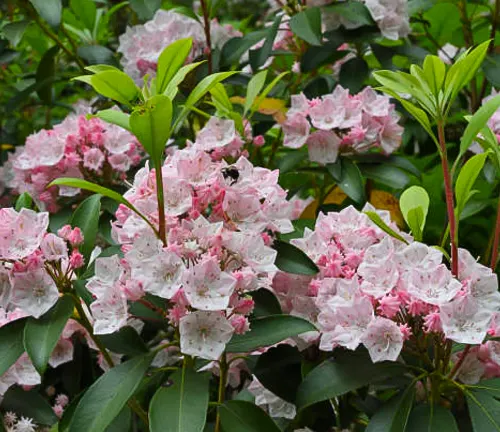
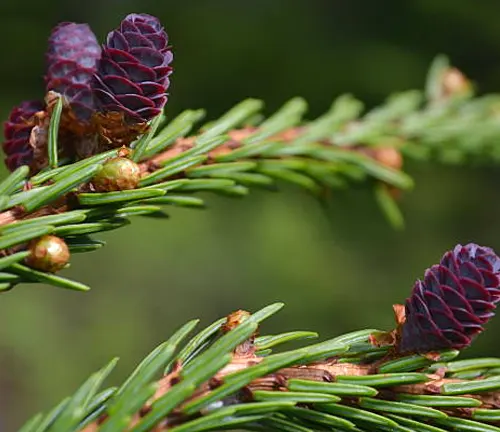
Fauna in Monadnock State Park
- American Black Bear (Ursus americanus): These majestic mammals are occasionally spotted in the park’s more remote areas. While generally elusive and shy around humans, they play a crucial role in the ecosystem as apex predators and seed dispersers.
- Peregrine Falcon (Falco peregrinus): Once endangered, these remarkable birds of prey have made a comeback thanks to conservation efforts. They nest on the park’s rocky cliffs and can be seen soaring high in search of prey, displaying incredible aerial agility.
- White-tailed Deer (Odocoileus virginianus): A common sight throughout the park, white-tailed deer are important for the ecological balance. They are often seen grazing in the meadows and forest edges, especially during dawn and dusk.
- Eastern Coyote (Canis latrans): Larger than their western counterparts, eastern coyotes are versatile and adaptable. They play a significant role in controlling small mammal populations and contribute to the park’s biodiversity.
- Red Fox (Vulpes vulpes): Easily identified by their bright red fur and bushy tails, red foxes are cunning and resourceful. They are often spotted in open areas, hunting for small rodents.
- Barred Owl (Strix varia): Known for their distinctive hooting call, barred owls are a symbol of the park’s nocturnal wildlife. These elusive birds are often heard but rarely seen, residing deep in the forests.
- Ruffed Grouse (Bonasa umbellus): These ground-dwelling birds are known for their unique drumming display during mating season. They thrive in the park’s diverse habitats, from dense underbrush to open woodlands.
- American Red Squirrel (Tamiasciurus hudsonicus): Smaller and more vocal than the gray squirrel, the red squirrel is often seen scampering around the park’s coniferous areas. They play a vital role in seed dispersion, influencing the park’s forest dynamics.
- Wood Frog (Lithobates sylvaticus): Remarkable for their ability to survive freezing temperatures, wood frogs are a key indicator species in the park. They are commonly found in the park’s vernal pools and wetlands, contributing to its rich amphibian diversity.
- Monarch Butterfly (Danaus plexippus): These migratory butterflies add a splash of color to the park, especially in late summer. Their presence indicates the health of the park’s ecosystem, as they rely on specific plant species like milkweed for survival.
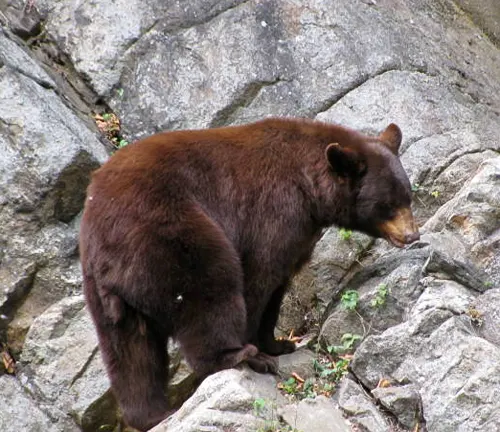
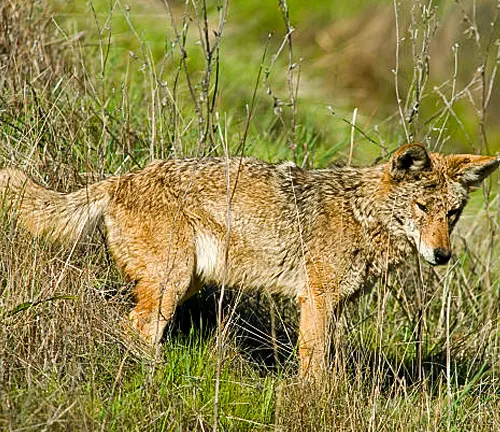
Different Attractions in Monadnock State Park
Summit of Mount Monadnock: The crown jewel of Monadnock State Park is undoubtedly its summit. Standing at 3,165 feet, Mount Monadnock is one of the most climbed mountains in the world. The summit offers unparalleled 360-degree views, encompassing much of New Hampshire and even parts of neighboring states. On clear days, hikers can even catch a glimpse of the Boston skyline. The journey to the top is a rewarding challenge, with several trails of varying difficulty leading to the summit, each offering its own unique scenic vistas and experiences.

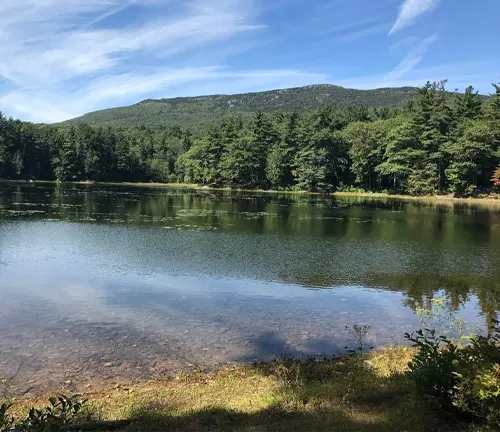
Gilson Pond Area: Ideal for families and those looking for a less strenuous outdoor experience, the Gilson Pond area is a picturesque spot within the park. It features a beautiful pond surrounded by lush forest, perfect for picnicking, bird watching, and enjoying a peaceful day in nature. The area also has a campground, making it a great option for those who wish to extend their stay and immerse themselves in the park’s natural beauty.
Historic Sites and Monuments: Monadnock State Park is steeped in history, and this is reflected in its various historic sites and monuments. One notable site is the Thoreau Trail, named after Henry David Thoreau, who climbed the mountain multiple times and wrote about it. Walking this trail gives a sense of connection to the past and to the natural beauty that inspired so many renowned thinkers and writers.
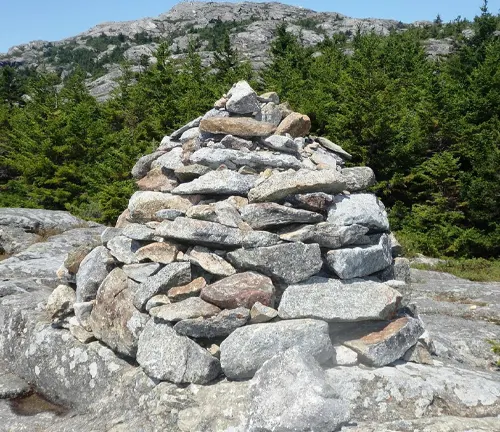
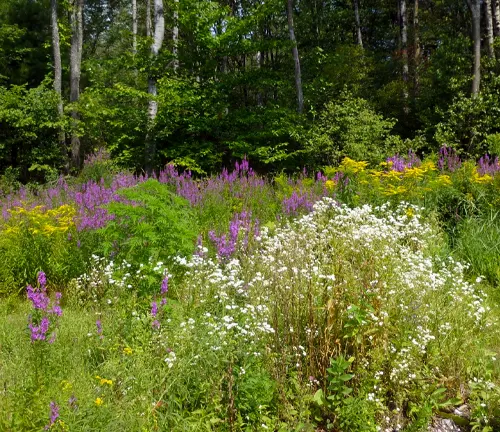
Wildflower Meadows: Particularly in the spring and early summer, the park’s meadows are a bloom with a variety of wildflowers. These areas provide a vibrant display of colors and are a haven for photographers, nature enthusiasts, and anyone who appreciates the subtle beauty of wild flora. The meadows also play a crucial role in supporting the park’s pollinators, including bees, butterflies, and birds.
Park Visitor Center: For those looking to learn more about the park, the Visitor Center is an invaluable resource. It offers educational exhibits, information about the park’s trails and wildlife, and insights into the park’s history and conservation efforts. The Visitor Center is also a great starting point for first-time visitors to get oriented and plan their exploration of the park.
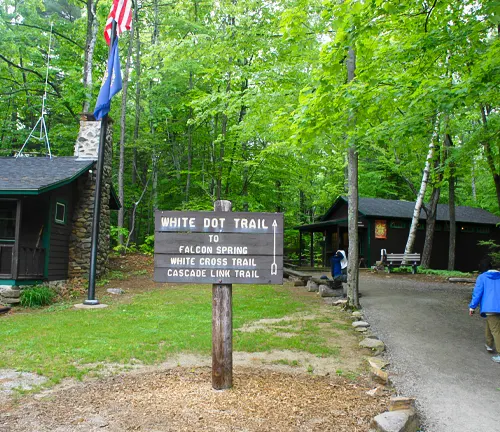

Winter Sports Opportunities: During the winter months, Monadnock State Park transforms into a wonderland for winter sports enthusiasts. The park’s trails become popular for snowshoeing and cross-country skiing, offering a different perspective of the landscape blanketed in snow. This seasonal shift in activities provides visitors with a year-round destination for outdoor recreation.
Recreational Activities in Monadnock State Park
- Hiking: Hiking is undoubtedly the most popular activity in Monadnock State Park, with a variety of trails suited for different skill levels and experiences. Trails like the White Dot Trail, the most direct route to the summit, offer a more challenging hike, while the White Cross Trail provides a slightly less steep alternative. Each trail promises unique scenic views, wildlife encounters, and the satisfaction of reaching the iconic summit.
- Bird Watching: The park’s diverse habitats make it an excellent location for bird watching. Enthusiasts can spot species such as the peregrine falcon, barred owl, and various songbirds. The changing seasons bring different species, making the park a year-round destination for birders. The serene natural environment offers a peaceful backdrop for this contemplative activity.
- Picnicking: With its lush meadows and scenic vistas, Monadnock State Park is a perfect spot for picnicking. Families, friends, and solo travelers can find numerous spots throughout the park to relax and enjoy a meal surrounded by nature. The Gilson Pond area, in particular, is a favorite for its picturesque setting and convenient access.
- Camping: For those looking to extend their stay, the park offers camping facilities, including the family-friendly Gilson Pond Campground. Camping in the park allows visitors to fully immerse themselves in the natural beauty of the area, experience wildlife at closer quarters, and enjoy starry nights away from the city lights.
- Snowshoeing and Cross-Country Skiing: In the winter months, the park’s landscape transforms, offering opportunities for snowshoeing and cross-country skiing. The trails provide a different experience in the snow-covered setting, appealing to those who enjoy winter sports and the serene beauty of the snowy wilderness.
- Photography: With its stunning natural scenery, Monadnock State Park is a haven for photographers. From capturing the vibrant colors of autumn foliage to the serene beauty of a winter snowscape, the park offers endless opportunities for both amateur and professional photographers to capture the beauty of the natural world.
- Nature and Interpretive Programs: The park occasionally offers guided nature walks and interpretive programs, providing educational insights into the park’s ecology, geology, and history. These programs are excellent for families and individuals looking to deepen their understanding of the natural environment and the importance of conservation.
- Rock Climbing and Bouldering: For adventure seekers, certain areas of the park offer rock climbing and bouldering opportunities. The granite formations of Mount Monadnock present a thrilling challenge for climbers, with routes varying in difficulty. It’s a great way to experience the park from a different perspective and test one’s physical and mental strength.
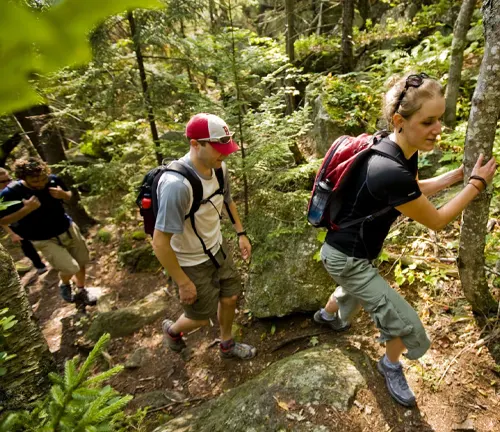
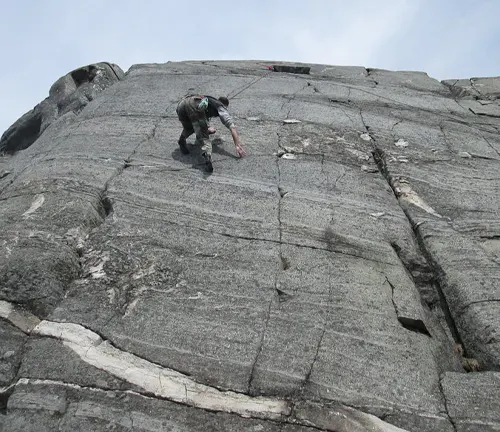
Different Facilities and Amenities in Monadnock State Park
- Visitor Center: The Visitor Center at Monadnock State Park is a key resource for guests. It offers detailed maps, informative exhibits about the park’s natural and cultural history, and knowledgeable staff to answer questions. The center also provides educational materials, making it an excellent starting point for first-time visitors to familiarize themselves with the park’s trails, safety guidelines, and conservation efforts.
- Camping Facilities: The park offers a range of camping options, including the Gilson Pond Campground, which is well-suited for families and groups. These campsites provide basic amenities such as picnic tables, fire pits, and restroom facilities. The campground allows visitors to immerse themselves in the park’s natural environment, offering a peaceful retreat and opportunities for nighttime stargazing.
- Picnic Areas: Scattered throughout the park are several picnic areas, ideal for families and groups to enjoy outdoor meals in picturesque settings. These areas are equipped with picnic tables and, in some cases, charcoal grills, providing a perfect spot for a leisurely lunch or a scenic break during hikes.
- Hiking Trails: The park boasts an extensive network of hiking trails, ranging from easy walks to challenging hikes leading to the summit of Mount Monadnock. These well-marked trails are maintained to ensure safety and environmental sustainability, offering visitors various options to explore the park’s natural beauty at their own pace.
- Restrooms and Basic Amenities: Essential amenities like restrooms are available at key locations within the park, including near the Visitor Center and main parking areas. These facilities are maintained for cleanliness and convenience, ensuring a comfortable experience for all visitors.
- Parking Facilities: Ample parking is available at Monadnock State Park, with several lots located near the main entrance and trailheads. This provides easy access for visitors to start their exploration of the park, whether they’re there for hiking, picnicking, or simply enjoying the natural surroundings.
- Educational Signage: Throughout the park, visitors will find educational signage that provides insights into the local flora, fauna, and geological features. These signs enhance the visitor experience by offering valuable information about the environment and the unique aspects of the park.
- Seasonal Facilities: During the winter months, certain facilities such as the Gilson Pond Campground may be closed, but the park remains open for winter activities like snowshoeing and cross-country skiing. Visitors should check the park’s official website or contact the Visitor Center for the most current information on facility availability and seasonal changes.
Tips and Advice for Visiting Monadnock State Park
- Check Weather Conditions: Before heading to Monadnock State Park, it’s crucial to check the local weather forecast. The weather can change rapidly, especially at higher elevations, so being prepared for varying conditions is important. Bring appropriate clothing and gear to handle potential shifts in weather, such as rain gear, extra layers for cold, and sun protection for warmer days.
- Wear Suitable Footwear: Given the rugged terrain, especially on the hiking trails leading to the summit, wearing sturdy, comfortable footwear is essential. Hiking boots with good ankle support and grip can prevent slips and falls, making your hike safer and more enjoyable.
- Stay Hydrated and Bring Snacks: Always carry enough water, especially during warmer months or when tackling longer trails. Dehydration can be a serious concern. Additionally, pack energy-boosting snacks like nuts, granola bars, or fruit to maintain energy levels throughout your visit.
- Respect Wildlife and Natural Surroundings: Monadnock State Park is home to diverse wildlife. It’s important to observe animals from a distance and not disturb their natural habitat. Also, adhere to the “Leave No Trace” principles by not leaving any garbage behind and staying on designated trails to protect the park’s ecosystems.
- Plan Your Visit According to Your Abilities: Choose trails and activities that suit your fitness level and hiking experience. The park offers a range of trails from easy to challenging. Overestimating your ability can lead to accidents or undue strain, so it’s wise to start with less challenging options if you’re a beginner.
- Familiarize Yourself with Park Rules and Regulations: Before visiting, review the park’s rules and regulations, available on the park’s website or at the Visitor Center. This includes guidelines on pets, campfires, camping, and conservation practices. Adhering to these rules ensures a safe and enjoyable experience for all visitors.
- Arrive Early During Peak Season: Monadnock State Park can get quite busy, especially during peak seasons like fall foliage and summer weekends. Arriving early ensures you find parking and enjoy the trails with fewer crowds.
- Prepare for Limited Cell Service: Cell phone reception can be spotty in the park, especially in remote areas or at higher elevations. Prepare for this by downloading maps and trail guides ahead of time, and inform someone of your plans before you set out.
- Be Mindful of Park Closing Times: Be aware of the park’s operating hours and plan your activities so that you return to your car or campsite well before closing time. This is especially important for hikers aiming for the summit, as descending after dark can be risky.
- Carry a Map and Compass/GPS: While trails are marked, carrying a map and compass or a GPS device is a good safety measure. This is particularly useful if you venture onto less-traveled paths or in the unlikely event you get disoriented.
Recommendation
If you’re seeking an escape into the beauty of nature, Monadnock State Park in New Hampshire is a must-visit destination. Renowned for its breathtaking views from the summit of Mount Monadnock, the park offers a variety of trails suitable for all levels, making it perfect for both seasoned hikers and families. The park’s rich biodiversity, picturesque landscapes, and tranquil ambiance provide an ideal setting for activities like bird watching, picnicking, and nature photography. Whether you’re looking for a challenging outdoor adventure or a peaceful retreat in nature, Monadnock State Park promises an unforgettable experience. I highly encourage you to explore this natural wonder and create lasting memories in the great outdoors!
Conclusion
In summary, Monadnock State Park is a jewel of New Hampshire, offering a blend of stunning natural beauty, rich history, and diverse recreational opportunities. Whether you seek the thrill of a summit hike or the peace of a woodland stroll, this park provides an experience that resonates long after the visit. It stands as a vivid reminder of the beauty and adventure that nature holds, making it a must-visit destination for outdoor enthusiasts and nature lovers alike.
FAQs
- What is the best time of year to visit Monadnock State Park?
The best time to visit is during the fall for stunning foliage or in the late spring and early summer for milder weather and blooming wildflowers. However, the park is open year-round, offering different experiences each season. - Are there trails suitable for beginners?
Yes, the park offers a range of trails, from easy to challenging. The White Cross Trail is a good option for beginners, offering a less steep route to the summit. - Can I bring my dog to Monadnock State Park?
Yes, dogs are allowed in the park but must be kept on a leash at all times. It’s important to clean up after your pet and ensure they don’t disturb wildlife. - Is camping available in the park?
Yes, the park offers camping, particularly at the Gilson Pond Campground, which has facilities suitable for families and groups. Note that camping is seasonal, typically from May to October. - Do I need to make a reservation to visit the park?
While you don’t need reservations to visit the park for day use, it is recommended to arrive early during peak season. For camping, reservations are advised and can be made online. - Are there any guided tours available?
The park occasionally offers guided nature walks and educational programs, especially during the peak seasons. It’s best to check the park’s official website or visitor center for the current schedule. - Is the park accessible for visitors with disabilities?
While the rugged terrain of some areas may pose challenges, the park strives to be as accessible as possible. There are certain areas and trails more suited for visitors with mobility challenges. Contact the park’s visitor center for more information. - What should I do in case of an emergency in the park?
For emergencies, contact park staff or call 911. It’s important to be aware of your location and have a means of communication. The park has limited cell phone reception, so planning ahead and letting someone know your itinerary is advised.
In closing, Monadnock State Park is a must-visit for anyone looking to experience the beauty and adventure of New Hampshire’s outdoors. Its stunning views, diverse trails, and rich natural beauty offer a perfect escape into nature. Whether for a day hike or a peaceful picnic, this park promises memorable moments in the heart of the great outdoors.



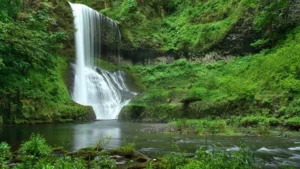


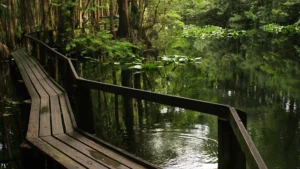




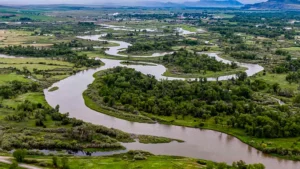
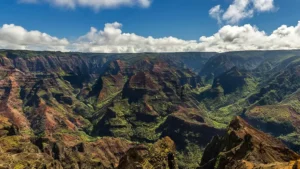
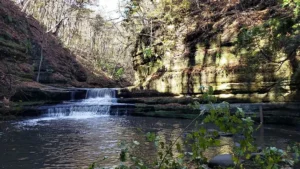
Leave your comment